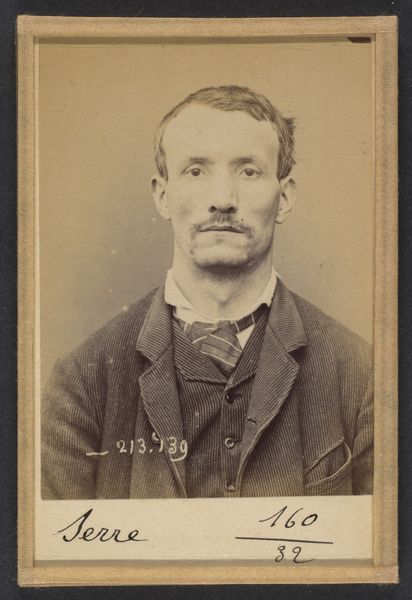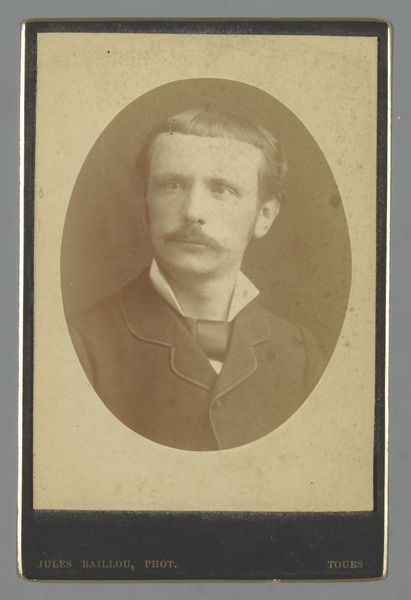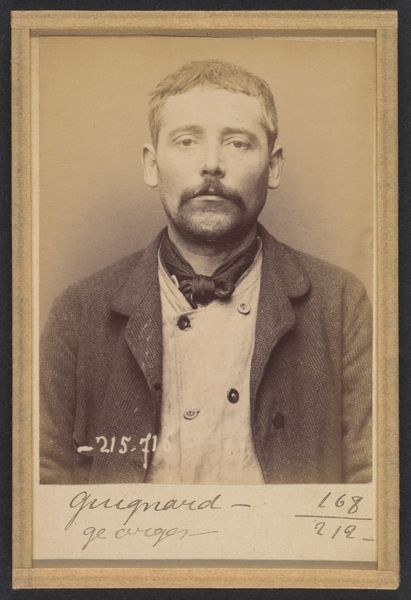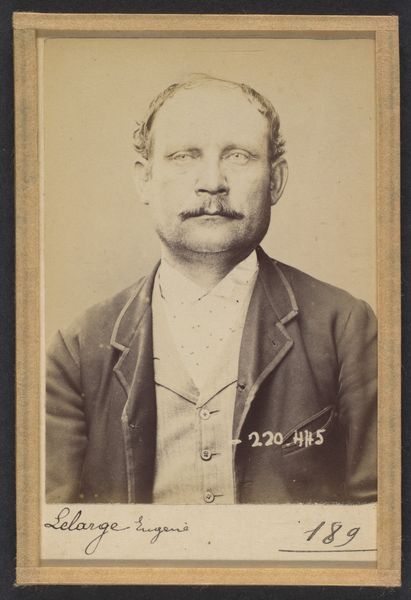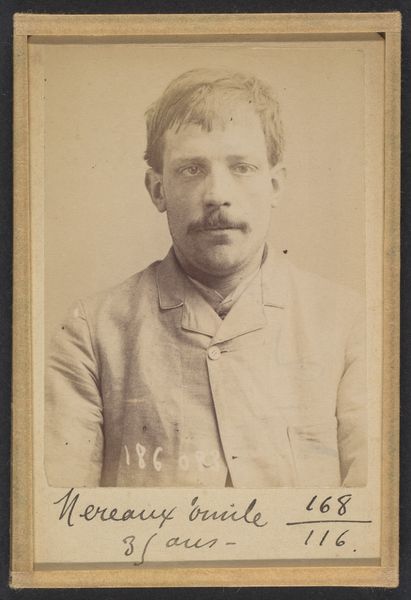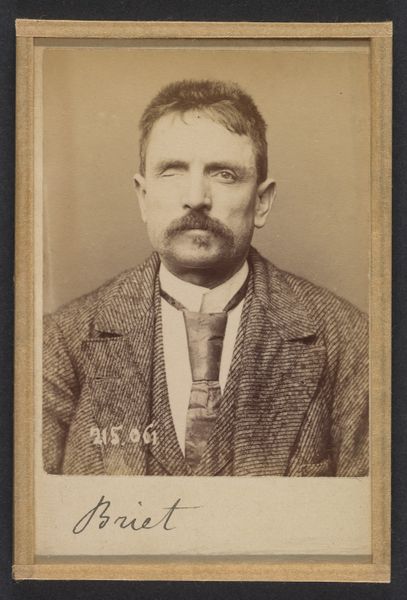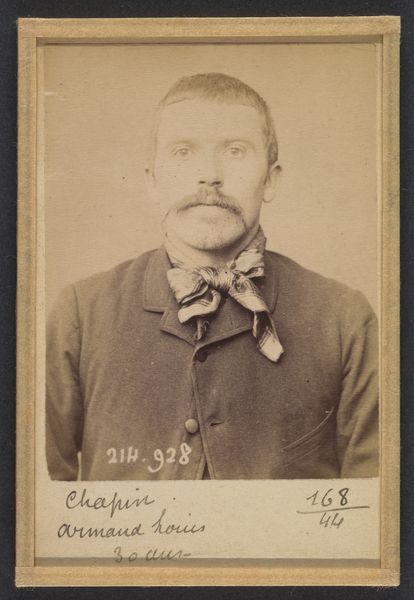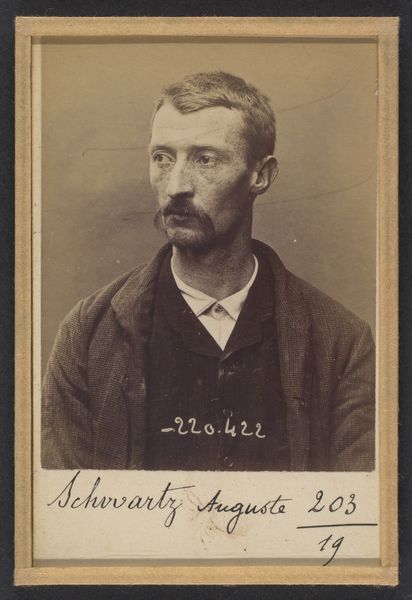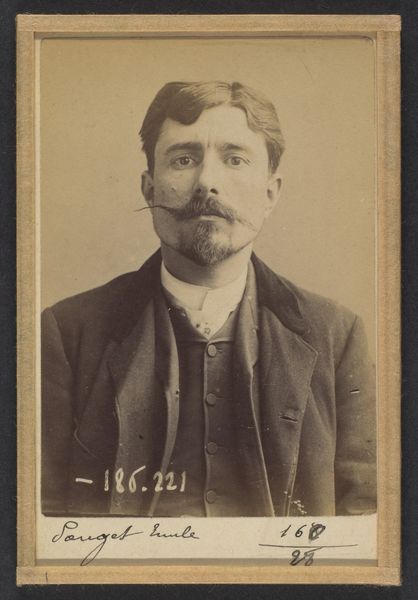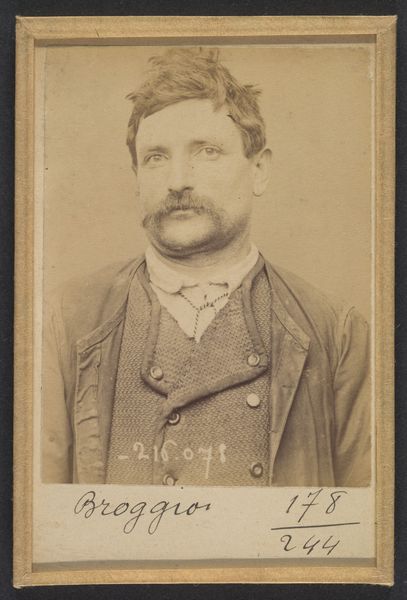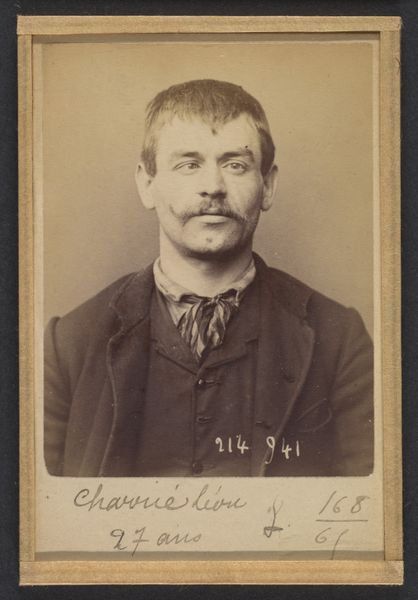
Poirier. Jacques, Étienne. 30 ans, né à Gien (Loiret). Garçon de marchand de vins. Anarchiste. 30/4/92. 1892
0:00
0:00
photography, gelatin-silver-print
#
portrait
#
photography
#
gelatin-silver-print
#
men
#
identity-politics
Dimensions: 10.5 x 7 x 0.5 cm (4 1/8 x 2 3/4 x 3/16 in.) each
Copyright: Public Domain
Editor: Here we have Alphonse Bertillon’s gelatin-silver print from 1892, titled “Poirier. Jacques, Étienne. 30 ans, né à Gien (Loiret). Garçon de marchand de vins. Anarchiste. 30/4/92.” The man’s stare is very direct; it feels less like a portrait and more like… evidence. What’s your take on this piece? Curator: This is indeed evidence, part of Bertillon’s system of judicial photography. Looking at it historically, we must recognize this image as an artifact of the criminal justice system, a system rife with biases. Editor: So, it's more about the system than the subject, even though it's his face staring back? Curator: Exactly. Consider how Bertillon’s method, aimed at controlling and categorizing individuals, reinforces existing power structures. The “anarchiste” label becomes less about the individual and more about the State’s attempt to marginalize dissent. Is it a portrait, or an instrument of control, disguised as identification? Editor: I never considered how the label changes everything. Does that mean Bertillon’s "art," and I use the term loosely, only existed to serve power? Curator: That’s a strong statement. Art always exists within socio-political contexts, whether consciously or not. What I encourage you to think about, regarding an image like this, is whether its original function, that of control, outweighs any artistic intention on the photographer’s part. Editor: It’s disturbing to think about photography used that way. Curator: Indeed. Recognizing this tension helps us to understand the complex relationship between art, power, and the institutions that shape their interaction. Editor: That's a lot to think about when considering visual culture, it is also so interesting. Thanks.
Comments
No comments
Be the first to comment and join the conversation on the ultimate creative platform.
